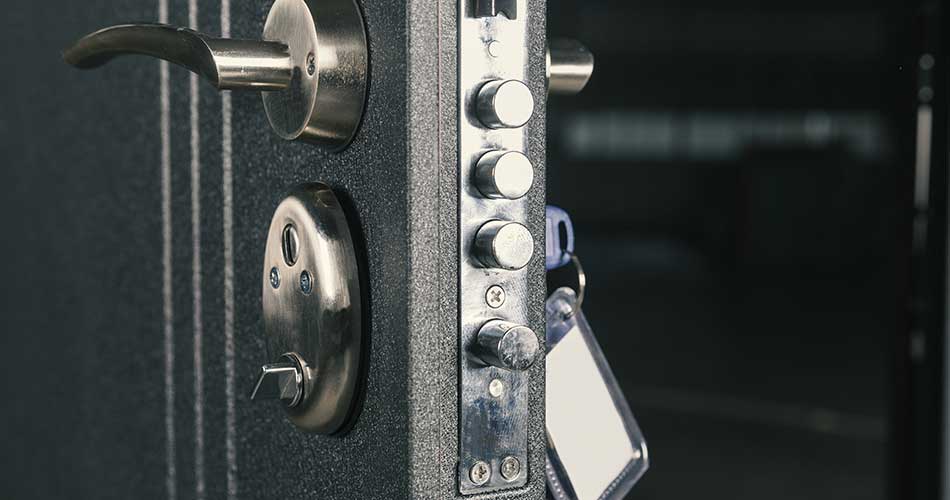By StateFarm
Taking the time to research and install the best door lock for your home provides a solid first line of protection for your family members and belongings.
So how do you know if you need better locks for that important task? Professional locksmiths can evaluate your present lock’s security, as can members of your local police department. These professionals have seen firsthand what works and what doesn’t, so consider taking advantage of their experience and expertise when choosing the best door locks for your home.
Research the options
Some locks sold at hardware stores have been graded according to standards developed by the American National Standards Institute (ANSI) and the Builders Hardware Manufacturers Association (BHMA). Product grades can range from Grade One through Grade Three, with one being the highest in terms of function and material integrity. Visit the BHMA website to research a lock you intend to purchase and see how it stacks up to its competitors.
Also, remember some locks include strike plates that include extra-long three-inch screws for added protection against force. If your locks don’t come with them, other bolstering options for strike plates are available at your local hardware store.
Doorjamb reinforcement kits are also available and can be retrofit into the existing doorjamb to reinforce key strike points (hinges, strike, and the door edge). The reinforcement plates are typically made of galvanized steel and installed with 3.5-inch screws. Adding doorjamb reinforcement significantly increases the strength of the door system. Be sure to follow the manufacturer’s recommendations for the length of the screws going into your doorframe.
Smart home systems also feature keycode-style locks that are coming into more common use lately.
Not so strong: spring latch locks
Spring latch locks, also known as slip bolt locks, provide minimal security but are the least expensive and easiest to install. They work by locking the doorknob of the door, thus preventing the release of a spring-loaded latch that fits into the doorframe.
However, this type of lock is vulnerable in several ways. Devices other than the properly fitting key can be used to release the pressure keeping the spring in place, allowing for the release of the bolt. More forceful intruders can smash the doorknob and lock from the door with a hammer or wrench. A protective metal plate to reinforce the wood around the doorknob is recommended to prevent this.
Stronger: standard deadbolt locks
The deadbolt lock works by effectively bolting the door into its frame. The bolt is “dead” in that it has to be manually moved in and out of place by means of a key or knob. There are three basic parts of deadbolt lock: a key-accessible outside cylinder, the “throw” (or bolt) which slides in and out of the door jamb, and the thumb-turn, which allows for manual control of the bolt from the inside of the home. A standard horizontal throw extends one inch beyond the edge of the door and into the jamb. All deadbolt locks should be made of solid steel, bronze, or brass; die-cast materials are not fashioned for great impact and could break apart.
Strongest: vertical and double cylinder deadbolt locks
The main weakness of any horizontal deadbolt lock is that it is possible for an intruder to pry the door apart from the jamb or its strike plate in the jamb to disengage the throw. This can be remedied with a vertical (or surface-mounted) deadbolt, which resists the separation of the lock from the jamb. The throw of a vertical deadbolt engages by interlocking with a set of cast metal rings affixed to the frame of the door. The rings surrounding the bolt make this lock essentially pry-proof.
In the instance of a door containing glass panes, a double-cylinder deadbolt might be employed. This particular type of deadbolt lock requires a key to unlock the bolt from both the outside and inside of the home—so a potential thief cannot simply break through the glass, reach inside, and manually unlatch the thumb-turn in order to unlock the door. However, some fire safety and building codes forbid the installation of locks that require keys to open from the inside, so consult with a contractor or locksmith in your area before installing one.
Consider alternatives to the potentially hazardous double cylinder deadbolt. Try installing a supplemental lock that is completely out of arm’s reach (either at the top or flush to the bottom of a door); security glazing; or impact-resistant glass panels.
It’s important to remember that no lock is 100% guaranteed to deter or keep out all intruders. However, you can greatly reduce the likelihood of intruders by making sure that all exterior doors are fitted with some form of deadbolt locks and strike plates, and that you are diligent in using these locks while at home and away.

